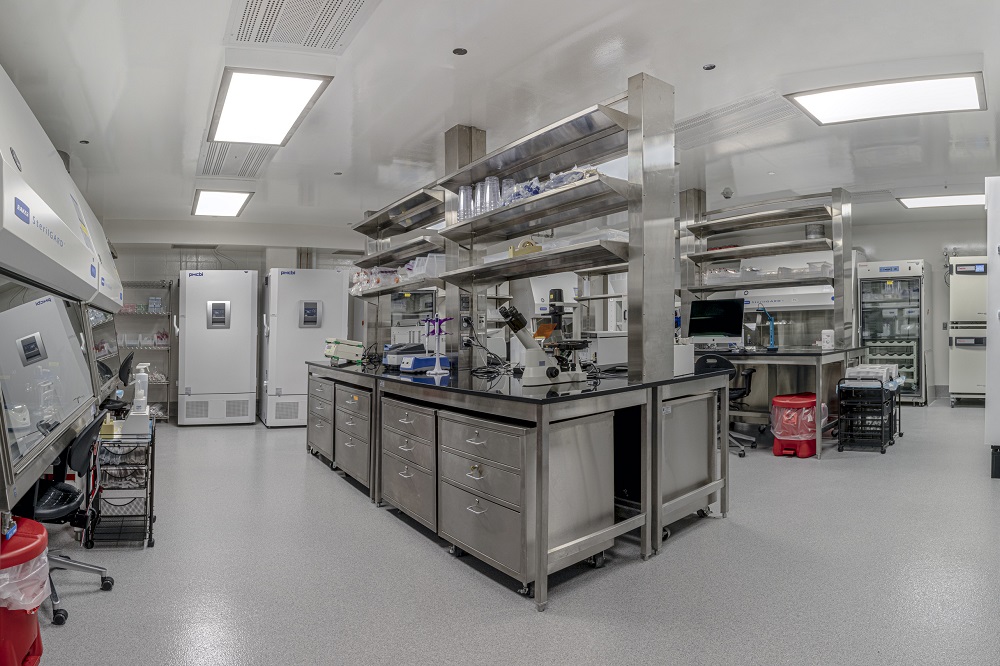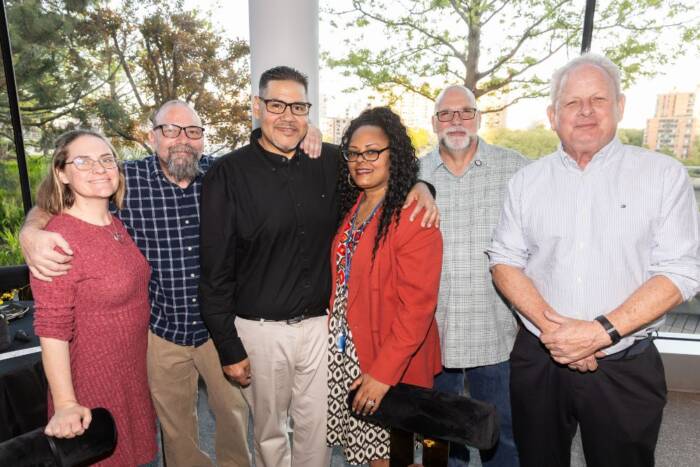New BSL-3 lab to advance research on pathogens

When Jeremy M. Rock joined Rockefeller in 2018, he had a novel idea about how to develop new treatments for tuberculosis. His plan, driven by modern tools like CRISPR, was to identify the specific genes that enable Mycobacterium tuberculosis to evade the immune system or become resistant to antibiotics, then trace the activity of those genes back to the molecular mechanisms underlying the disease. The approach has tremendous potential, but there is a major roadblock: The tuberculosis bacterium is extremely infectious and cannot be studied safely unless it’s contained in a highly specialized laboratory.
After two years of borrowing space from Weill Cornell Medicine, this month members of Rock’s lab—and their frozen tuberculosis samples—moved into a newly constructed biosafety level 3 laboratory on the Rockefeller campus. The facility, which Rock shares with Charles M. Rice, head of the Laboratory of Virology and Infectious Disease, uses negative air pressure to prevent the release of any airborne contaminants; exhausted air is filtered through high-efficiency HEPA filters.
All scientific labs must adhere to specific rules and regulations governed by the Centers for Disease Control and Prevention, based on the biological agents being handled. There are distinct biosafety levels ranging from one through four, defined by the standards and protocols that must be followed to ensure containment. While BSL-1 and BSL-2 are relatively common, BSL-3 labs are scarce—Rockefeller’s is one of only a handful in New York City. They must be designed with dedicated high-volume air handling equipment and built for easy disinfecting. The build must be precise: There can be no gaps around electrical or data connections, for example. Personnel must wear disposable protective equipment, and the facilities must exist for waste to be sterilized before it can be removed.
“The space has been designed to ensure the safety of our scientists and our community,” says Alexander Kogan, associate vice president of plant operations, whose team led the project. “We have transformed 5,600 square feet of underutilized space into a state-of-the-art containment lab.”
“This facility is incredibly important to our research,” says Jeremy Rock, head of Rockefeller’s Laboratory of Host-Pathogen Biology. “Mycobacterium tuberculosis has already infected about one quarter of the world’s population, and we need to develop new treatments as drug resistance continues to increase.”


